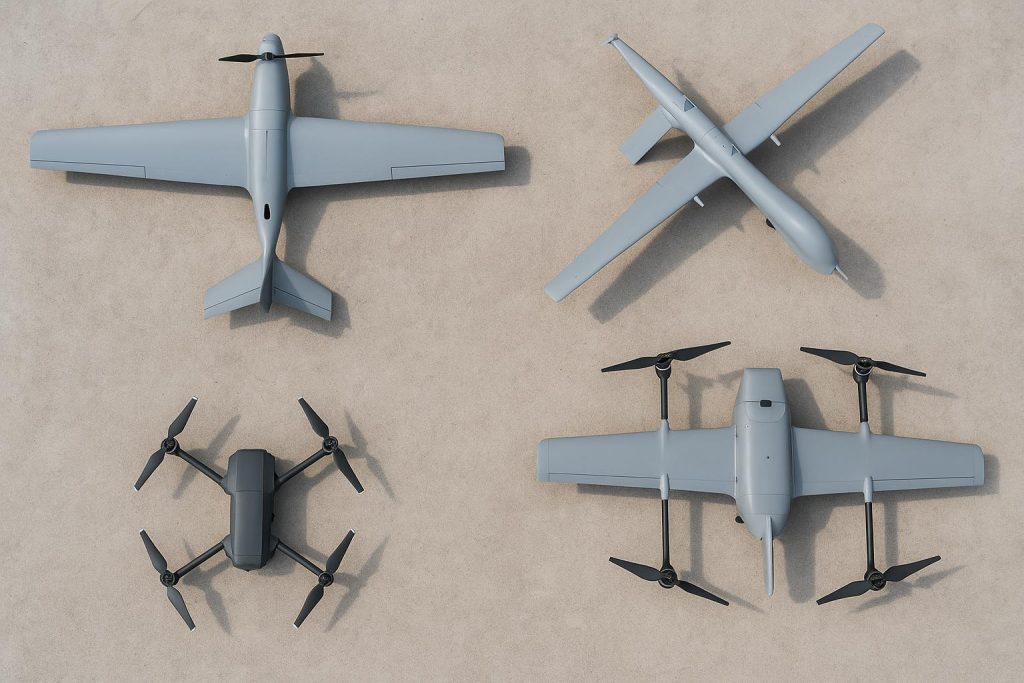Michael Henry DOD is the chief executive officer of Industrial Communications Group (ICG), LLC, where since 2018 he has led people operations, systems and data integration, and enterprise strategy for integrated global communications services and solutions. A Virginia Beach–based tactical battlefield communications professional, he previously served from 2007 to 2023 as a technical director within the Department of Defense at the Suffolk, Virginia complex, supporting U.S. Special Operations Command integration and worldwide initiatives. Earlier, he spent nearly three decades as a U.S. Army communications officer and earned multiple combat decorations, including the Defense Superior Service Medal and the Defense Meritorious Service Medal. He holds an MBA from Embry Riddle University and a BA in economics from the University of California, Davis.
An unmanned aerial vehicle (UAV) aircraft can be controlled remotely, without the need for a human on board to fly it. UAVs can also be piloted via on-board computer systems. As military aircraft, UAVs provide several advantages; they can be equipped with various sensors, target designators, offensive weaponry, and more tools that provide insight into enemy positions and maneuvers. UAVs do not need to be built with life-support systems or any other safety equipment required by manned aircraft, allowing for more unique and efficient designs.
Modern UAV technology can be traced back to target drones and early examples of remotely piloted vehicles (RPVs) used by international military forces in the years following World War II. The first UAVs considered to be effective weaponry were developed early in the 1980s by the Israeli Defense Forces. These drones, which resembled miniatures of full-size model airplanes, carried infrared cameras and target designators that supported laser-guided munitions. The small size and quiet engines made the drones virtually undetectable, making early UAVs ideal for battlefield surveillance and other covert operations.
Today, the terms “UAV” and “drone” are used interchangeably, though the latter is a somewhat more informal term. The word “drone” is often used to describe commercially available equipment used by regular citizens, as opposed to the advanced UAVs used by the world’s militaries. The drones market for agriculture alone exceeded $2 billion globally in 2024.
UAVs can be categorized in several ways, such as by the components they use to fly. A remotely piloted aircraft system (RPAS), for example, is defined as a series of components that support flight operations for a remotely-piloted aircraft, including remote pilot stations, command and control links, and various additional system elements, per the International Civil Aviation Organization.
An unmanned aircraft system (UAS), by comparison, refers to any unmanned aerial system and associated elements that support operations with no pilot on board. The key difference between RPAS and UAS is that the former features one or more remote pilot stations, which makes it easier to integrate RPAS into forces that include manned aircraft. A UAS, meanwhile, requires specialized airspace accommodations, including a specific distance from manned aircraft.
UAVs can also be described by their methods of flight, including fixed wing, rotor-wing, and powered-lift drones. A fixed wing drone, such as the AeroVironment’s JUMP 20 fixed wing UAV, consists of wings that remain rigid and unchanged during flight. They form a single structure with the body of the drone, the same as passenger airplanes, though fixed wing UAVs can feature ailerons, rudders, and various control surfaces that turn and rotate.
Fixed wing drones, which are highly aerodynamic, can remain in the air for extended periods. That said, they demand more comprehensive knowledge of UAV operators and require considerable space for take-offs and landings.
Rotary-wing drones, on the other hand, fly using rotor blades that rotate at rapid speeds around a central mast, forcing the air downwards to generate vertical lift, much like a helicopter. Rotary-wing UAVs are easier to operate and can hover in place, making them extremely versatile during military operations. However, they cannot remain in flight for very long compared to fixed wing vehicles.
Finally, powered-lift drones exist as a bridge between fixed wing and rotary-wing aircraft. Tiltrotor drones, tiltwing aircraft, and other powered-lift UAVs can take off and land as rotary-wing drones, while also featuring fixed wings that allow for extended flight missions.




